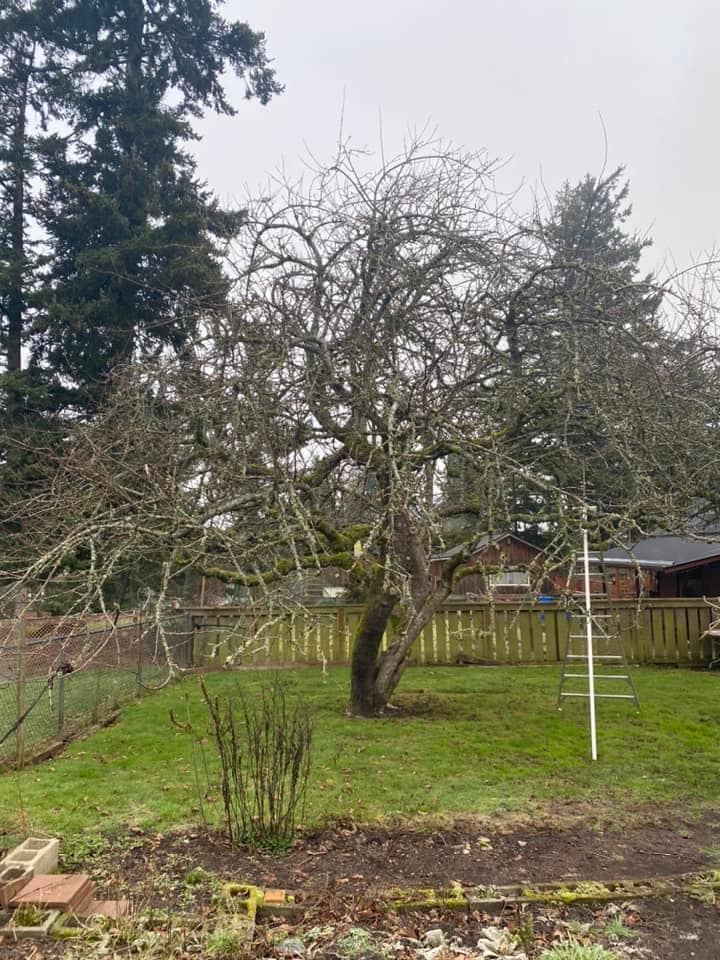Winter pruning of fruit trees is crucial for maintaining their health and productivity.
Here are some tips:
Timing: Prune in late winter when trees are dormant but before vigorous spring growth starts.
Tools: Use sharp, clean pruning tools. This includes hand pruners for small branches, loppers for medium-sized branches, and a pruning saw for larger limbs.
Remove Dead or Diseased Wood: Cut away all dead, diseased, or damaged branches to prevent the spread of decay and pests.
Thin Out: Thin out crowded branches to increase air circulation and sunlight penetration. This promotes healthier growth and better fruit production.
Shape the Tree: Prune to maintain a balanced, open canopy (or open scaffolds). This helps in even fruit development and ease of harvest.
Cutting Technique: Make clean cuts close to the trunk or main branch without leaving a stub. Angled cuts prevent water accumulation and promote healing.
Avoid Over-Pruning: Don’t remove more than 30% of the tree’s total branches in one season as it can stress the tree.
.
Safety First: Use appropriate safety gear and be cautious when using ladders or cutting high branches.
Clean Up: After pruning, clean up and dispose of the pruned material to reduce the risk of disease.
Regular winter pruning is key to healthy and productive fruit trees. Remember, each cut can influence the growth of the tree, so prune thoughtfully.
We’ve been offering fruit tree pruning services in the Capitol Region for over 12 years!
The dormant season is a key time to make the larger structural thinning cuts to our fruit trees that create better airflow and sunlight penetration. This is especially true of overgrown trees, or those that have been hard pruned in the past but then let go. We are ready to start making our fruit tree rounds in Late January through to mid-March.
More Resources for the DIYer:
If you haven’t checked out Gardener’s Kit for pruning gear & ladders, do so here:
Heritage Apple Tree – BEFORE

Heritage Apple Tree – AFTER

